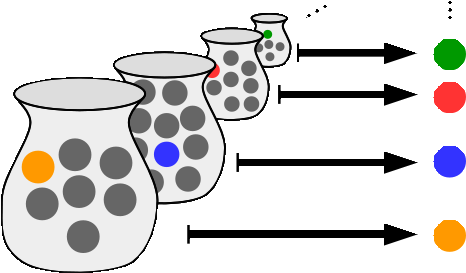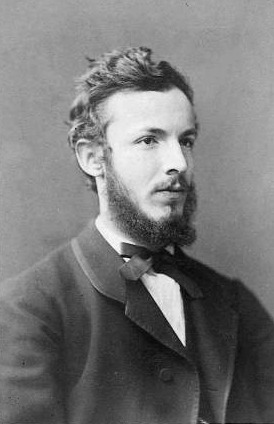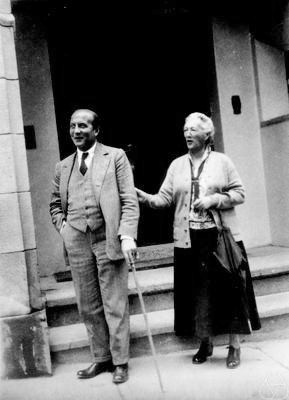|
Uncountably
In mathematics, an uncountable set, informally, is an infinite set that contains too many elements to be countable. The uncountability of a set is closely related to its cardinal number: a set is uncountable if its cardinal number is larger than aleph-null, the cardinality of the natural numbers. Examples of uncountable sets include the set of all real numbers and set of all subsets of the natural numbers. Characterizations There are many equivalent characterizations of uncountability. A set ''X'' is uncountable if and only if any of the following conditions hold: * There is no injective function (hence no bijection) from ''X'' to the set of natural numbers. * ''X'' is nonempty and for every ω-sequence of elements of ''X'', there exists at least one element of X not included in it. That is, ''X'' is nonempty and there is no surjective function from the natural numbers to ''X''. * The cardinality of ''X'' is neither finite nor equal to \aleph_0 (aleph-null). * The set ''X'' ... [...More Info...] [...Related Items...] OR: [Wikipedia] [Google] [Baidu] |
Real Number
In mathematics, a real number is a number that can be used to measure a continuous one- dimensional quantity such as a duration or temperature. Here, ''continuous'' means that pairs of values can have arbitrarily small differences. Every real number can be almost uniquely represented by an infinite decimal expansion. The real numbers are fundamental in calculus (and in many other branches of mathematics), in particular by their role in the classical definitions of limits, continuity and derivatives. The set of real numbers, sometimes called "the reals", is traditionally denoted by a bold , often using blackboard bold, . The adjective ''real'', used in the 17th century by René Descartes, distinguishes real numbers from imaginary numbers such as the square roots of . The real numbers include the rational numbers, such as the integer and the fraction . The rest of the real numbers are called irrational numbers. Some irrational numbers (as well as all the rationals) a ... [...More Info...] [...Related Items...] OR: [Wikipedia] [Google] [Baidu] |
Infinite Set
In set theory, an infinite set is a set that is not a finite set. Infinite sets may be countable or uncountable. Properties The set of natural numbers (whose existence is postulated by the axiom of infinity) is infinite. It is the only set that is directly required by the axioms to be infinite. The existence of any other infinite set can be proved in Zermelo–Fraenkel set theory (ZFC), but only by showing that it follows from the existence of the natural numbers. A set is infinite if and only if for every natural number, the set has a subset whose cardinality is that natural number. If the axiom of choice holds, then a set is infinite if and only if it includes a countable infinite subset. If a set of sets is infinite or contains an infinite element, then its union is infinite. The power set of an infinite set is infinite. Any superset of an infinite set is infinite. If an infinite set is partitioned into finitely many subsets, then at least one of them must be infinite ... [...More Info...] [...Related Items...] OR: [Wikipedia] [Google] [Baidu] |
Cantor Set
In mathematics, the Cantor set is a set of points lying on a single line segment that has a number of unintuitive properties. It was discovered in 1874 by Henry John Stephen Smith and mentioned by German mathematician Georg Cantor in 1883. Through consideration of this set, Cantor and others helped lay the foundations of modern point-set topology. The most common construction is the Cantor ternary set, built by removing the middle third of a line segment and then repeating the process with the remaining shorter segments. Cantor mentioned this ternary construction only in passing, as an example of a perfect set that is nowhere dense. More generally, in topology, a Cantor space is a topological space homeomorphic to the Cantor ternary set (equipped with its subspace topology). The Cantor set is naturally homeomorphic to the countable product ^ of the discrete two-point space \underline 2 . By a theorem of L. E. J. Brouwer, this is equivalent to being perfect, nonempty, compac ... [...More Info...] [...Related Items...] OR: [Wikipedia] [Google] [Baidu] |
Cardinality Of The Continuum
In set theory, the cardinality of the continuum is the cardinality or "size" of the set of real numbers \mathbb R, sometimes called the continuum. It is an infinite cardinal number and is denoted by \bold\mathfrak c (lowercase Fraktur "c") or \bold, \bold\mathbb R\bold, . The real numbers \mathbb R are more numerous than the natural numbers \mathbb N. Moreover, \mathbb R has the same number of elements as the power set of \mathbb N. Symbolically, if the cardinality of \mathbb N is denoted as \aleph_0, the cardinality of the continuum is This was proven by Georg Cantor in his uncountability proof of 1874, part of his groundbreaking study of different infinities. The inequality was later stated more simply in his diagonal argument in 1891. Cantor defined cardinality in terms of bijective functions: two sets have the same cardinality if, and only if, there exists a bijective function between them. Between any two real numbers ''a'' < ''b'', no matter how close they ... [...More Info...] [...Related Items...] OR: [Wikipedia] [Google] [Baidu] |
Powerset
In mathematics, the power set (or powerset) of a set is the set of all subsets of , including the empty set and itself. In axiomatic set theory (as developed, for example, in the ZFC axioms), the existence of the power set of any set is postulated by the axiom of power set. The powerset of is variously denoted as , , , \mathbb(S), or . Any subset of is called a ''family of sets'' over . Example If is the set , then all the subsets of are * (also denoted \varnothing or \empty, the empty set or the null set) * * * * * * * and hence the power set of is . Properties If is a finite set with the cardinality (i.e., the number of all elements in the set is ), then the number of all the subsets of is . This fact as well as the reason of the notation denoting the power set are demonstrated in the below. : An indicator function or a characteristic function of a subset of a set with the cardinality is a function from to the two-element set , denoted as , a ... [...More Info...] [...Related Items...] OR: [Wikipedia] [Google] [Baidu] |
Axiom Of Choice
In mathematics, the axiom of choice, abbreviated AC or AoC, is an axiom of set theory. Informally put, the axiom of choice says that given any collection of non-empty sets, it is possible to construct a new set by choosing one element from each set, even if the collection is infinite. Formally, it states that for every indexed family (S_i)_ of nonempty sets (S_i as a nonempty set indexed with i), there exists an indexed set (x_i)_ such that x_i \in S_i for every i \in I. The axiom of choice was formulated in 1904 by Ernst Zermelo in order to formalize his proof of the well-ordering theorem. The axiom of choice is equivalent to the statement that every partition has a transversal. In many cases, a set created by choosing elements can be made without invoking the axiom of choice, particularly if the number of sets from which to choose the elements is finite, or if a canonical rule on how to choose the elements is available — some distinguishing property that happens to ... [...More Info...] [...Related Items...] OR: [Wikipedia] [Google] [Baidu] |
Aleph Number
In mathematics, particularly in set theory, the aleph numbers are a sequence of numbers used to represent the cardinality (or size) of infinite sets. They were introduced by the mathematician Georg Cantor and are named after the symbol he used to denote them, the Hebrew letter aleph (ℵ). The smallest cardinality of an infinite set is that of the natural numbers, denoted by \aleph_0 (read ''aleph-nought'', ''aleph-zero'', or ''aleph-null''); the next larger cardinality of a well-ordered set is \aleph_1, then \aleph_2, then \aleph_3, and so on. Continuing in this manner, it is possible to define an infinite cardinal number \aleph_ for every ordinal number \alpha, as described below. The concept and notation are due to Georg Cantor, who defined the notion of cardinality and realized that infinite sets can have different cardinalities. The aleph numbers differ from the infinity (\infty) commonly found in algebra and calculus, in that the alephs measure the sizes of sets, while ... [...More Info...] [...Related Items...] OR: [Wikipedia] [Google] [Baidu] |
Beth Two
In mathematics, particularly in set theory, the beth numbers are a certain sequence of infinite cardinal numbers (also known as transfinite numbers), conventionally written \beth_0, \beth_1, \beth_2, \beth_3, \dots, where \beth is the Hebrew letter beth. The beth numbers are related to the aleph numbers (\aleph_0, \aleph_1, \dots), but unless the generalized continuum hypothesis is true, there are numbers indexed by \aleph that are not indexed by \beth or the gimel function \gimel. Definition Beth numbers are defined by transfinite recursion: * \beth_0 = \aleph_0, * \beth_ = 2^, * \beth_\lambda = \sup\Bigl\, where \alpha is an ordinal and \lambda is a limit ordinal. The cardinal \beth_0 = \aleph_0 is the cardinality of any countably infinite set such as the set \mathbb of natural numbers, so that \beth_0 = , \mathbb, . Let \alpha be an ordinal, and A_\alpha be a set with cardinality \beth_\alpha = , A_\alpha, . Then, * \mathcal(A_\alpha) denotes the power set of A_\al ... [...More Info...] [...Related Items...] OR: [Wikipedia] [Google] [Baidu] |
Ordinal Number
In set theory, an ordinal number, or ordinal, is a generalization of ordinal numerals (first, second, th, etc.) aimed to extend enumeration to infinite sets. A finite set can be enumerated by successively labeling each element with the least natural number that has not been previously used. To extend this process to various infinite sets, ordinal numbers are defined more generally using linearly ordered greek letter variables that include the natural numbers and have the property that every set of ordinals has a least or "smallest" element (this is needed for giving a meaning to "the least unused element"). This more general definition allows us to define an ordinal number \omega (omega) to be the least element that is greater than every natural number, along with ordinal numbers , , etc., which are even greater than . A linear order such that every non-empty subset has a least element is called a well-order. The axiom of choice implies that every set can be well-orde ... [...More Info...] [...Related Items...] OR: [Wikipedia] [Google] [Baidu] |
Georg Cantor
Georg Ferdinand Ludwig Philipp Cantor ( ; ; – 6 January 1918) was a mathematician who played a pivotal role in the creation of set theory, which has become a foundations of mathematics, fundamental theory in mathematics. Cantor established the importance of one-to-one correspondence between the members of two sets, defined infinite set, infinite and well-order, well-ordered sets, and proved that the real numbers are more numerous than the natural numbers. Cantor's method of proof of this theorem implies the existence of an infinity of infinities. He defined the cardinal number, cardinal and ordinal number, ordinal numbers and their arithmetic. Cantor's work is of great philosophical interest, a fact he was well aware of. Originally, Cantor's theory of transfinite numbers was regarded as counter-intuitive – even shocking. This caused it to encounter resistance from mathematical contemporaries such as Leopold Kronecker and Henri Poincaré and later from Hermann Wey ... [...More Info...] [...Related Items...] OR: [Wikipedia] [Google] [Baidu] |
Aleph Number
In mathematics, particularly in set theory, the aleph numbers are a sequence of numbers used to represent the cardinality (or size) of infinite sets. They were introduced by the mathematician Georg Cantor and are named after the symbol he used to denote them, the Hebrew letter aleph (ℵ). The smallest cardinality of an infinite set is that of the natural numbers, denoted by \aleph_0 (read ''aleph-nought'', ''aleph-zero'', or ''aleph-null''); the next larger cardinality of a well-ordered set is \aleph_1, then \aleph_2, then \aleph_3, and so on. Continuing in this manner, it is possible to define an infinite cardinal number \aleph_ for every ordinal number \alpha, as described below. The concept and notation are due to Georg Cantor, who defined the notion of cardinality and realized that infinite sets can have different cardinalities. The aleph numbers differ from the infinity (\infty) commonly found in algebra and calculus, in that the alephs measure the sizes of sets, while ... [...More Info...] [...Related Items...] OR: [Wikipedia] [Google] [Baidu] |
David Hilbert
David Hilbert (; ; 23 January 1862 – 14 February 1943) was a German mathematician and philosopher of mathematics and one of the most influential mathematicians of his time. Hilbert discovered and developed a broad range of fundamental ideas including invariant theory, the calculus of variations, commutative algebra, algebraic number theory, the foundations of geometry, spectral theory of operators and its application to integral equations, mathematical physics, and the foundations of mathematics (particularly proof theory). He adopted and defended Georg Cantor's set theory and transfinite numbers. In 1900, he presented a collection of problems that set a course for mathematical research of the 20th century. Hilbert and his students contributed to establishing rigor and developed important tools used in modern mathematical physics. He was a cofounder of proof theory and mathematical logic. Life Early life and education Hilbert, the first of two children and only son of O ... [...More Info...] [...Related Items...] OR: [Wikipedia] [Google] [Baidu] |



